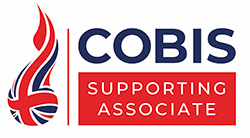Tackling prejudice in schools: it’s a bit of a sticky wicket, isn’t it? One could argue it’s as easy as teaching a fish to ride a bicycle or as complex as fitting a square peg into a round hole.
But is it genuinely so? Perhaps not, but there’s no denying that it’s a topic that needs a fair bit of chewing over.
Let’s take a moment to reflect on our own school days. Can you recall instances where you witnessed prejudice, perhaps based on race, religion, gender, or social class? Unfortunately, many of us can. I vividly remember being part of a diverse classroom, buzzing with children from different cultures, backgrounds, and walks of life. A true melting pot, but one that was not always devoid of bias and prejudice.
How did these prejudices manifest themselves? A snide remark here, a snub there, a joke in poor taste, or just an inexplicable cold shoulder. Does this ring a bell? Now, assign a score out of 10 to your level of understanding about the negative effects of prejudice during your school years. If you’re like me, you might find that score disconcertingly low.
Let’s break this down. The first aspect is recognising the existence of prejudice. It’s all about acknowledging the problem, rather than brushing it under the carpet. Yes, it exists, and it’s as prevalent in our schools as the award charts on the walls.
The second aspect is understanding the detrimental impact of these biases. Prejudice can shape the self-esteem, confidence, and overall academic and social performance of students. It’s not just about hurt feelings; it’s about the potential to stifle dreams and aspirations.
My travels across the UK and beyond, engaging with teachers and students, often revolve around this question: How do we challenge and overcome prejudice in our schools? Interestingly, the solution isn’t vastly different from motivating students or staff. It’s about understanding the relevance and the expectancy of success.
Prejudice often stems from ignorance, lack of exposure, and sometimes, an inherent fear of the unknown. Addressing these issues begins with education. Understanding the value of diversity, the richness it adds to our lives and experiences, is key to appreciating its relevance.
As for the expectancy of success, it’s about making every student and teacher believe that they can play a part in building a prejudice-free environment. Every small step counts. A conversation, a question, a shared experience can all contribute to this change.
Imagine how our schools would be if every student understood the importance of challenging prejudices and truly believed they could make a difference. Picture a school where teachers, instead of silently struggling with these issues, openly discuss them in classrooms. This would lead to a more supportive, accepting, and collaborative school environment.
But how do we get there? Education, dialogue, and a commitment to change are the key drivers. Encourage students to question, to discuss, and to share their experiences. Foster an environment where diversity is celebrated, not just tolerated. Equip teachers with the tools and training to handle these issues sensitively and effectively.
The benefits of such a transformation are immense. Schools become more harmonious, students more understanding, and teachers more adept at handling a diverse classroom. The ripple effects extend beyond the school gates into homes, communities, and eventually, society at large.
Let’s remember, these changes won’t happen overnight. It’s a slow process, often met with resistance. However, with persistence and a collective commitment, we can turn our schools into safe spaces where every student feels seen, heard, and valued, irrespective of their background.















